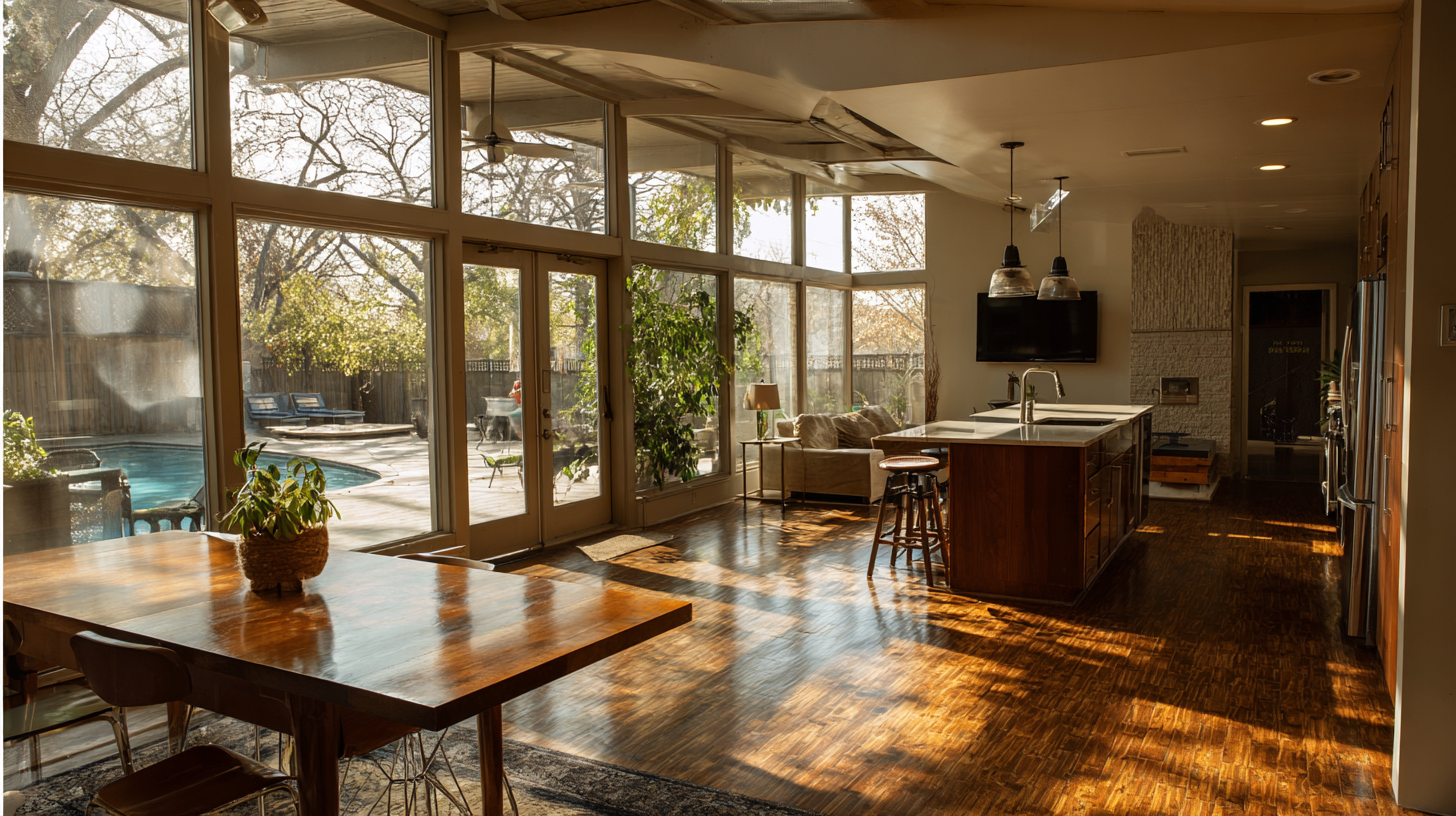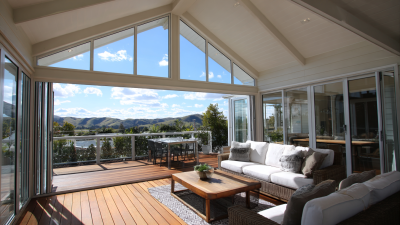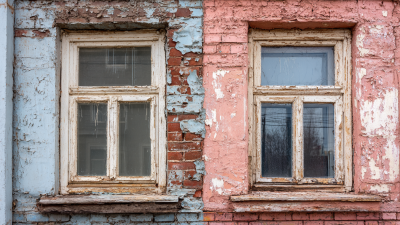Understanding the True Cost of Windows: Factors That Affect Your Home Investment
In the realm of home investment, understanding the true cost of windows is critical for homeowners seeking to enhance both energy efficiency and aesthetic appeal. According to a report by the National Association of Realtors, replacing old windows can yield a return on investment of approximately 70% to 80%, underscoring the importance of selecting the right materials and styles.

Factors such as window frame materials, energy ratings, and installation costs greatly influence the overall expenditure. The U.S. Department of Energy highlights that energy-efficient windows can save homeowners an estimated $100 to $500 annually on energy bills, further emphasizing that the initial cost of windows is often offset by long-term savings.
By examining these various components, homeowners can make informed decisions that align their financial goals with their home improvement projects.
Understanding Energy Efficiency Ratings: How Windows Impact Long-Term Savings
When considering the purchase of windows for your home, understanding energy efficiency ratings is crucial for evaluating long-term savings. Energy-efficient windows are rated using the National Fenestration Rating Council (NFRC) labels, which provide information on solar heat gain coefficient (SHGC), U-factor, and visible transmittance. According to the U.S. Department of Energy, replacing single-pane windows with ENERGY STAR® certified windows can save homeowners an average of $111 to $501 per year in energy costs, depending on their location and local energy prices.
Another key factor to consider is the insulation value, measured by the U-factor. A lower U-factor indicates better insulation, which translates into less energy loss and improved comfort. The American Architectural Manufacturers Association states that high-performance windows can reduce heating and cooling costs by up to 40%. Additionally, windows that provide high visible transmittance allow ample natural light into your home while minimizing heat loss, further enhancing energy savings. By choosing windows with optimal energy ratings, homeowners can significantly impact their utility bills and overall home investment over time.
The Role of Material Choices: Comparing Vinyl, Wood, and Aluminum Windows
When considering new windows for your home, the material choice plays a critical role in both initial investment and long-term performance. Vinyl windows, for instance, have become increasingly popular due to their affordability and low maintenance requirements. According to the 2023 Remodeling Impact Report by the National Association of Realtors, vinyl windows offer an average return on investment of about 74%, making them a financially favorable option for homeowners looking to enhance their property's value.
Wood windows, while offering superior aesthetics and insulation properties, come at a higher upfront cost. The same report indicates that although they can be more expensive to install—ranging from $800 to $1,200 per window—their charm and durability can significantly boost a home’s market appeal. With proper care, wood windows can last several decades, potentially increasing their long-term value. However, they require regular maintenance, such as painting or staining, which can add to the overall cost over time.
Aluminum windows present another viable option, especially in terms of strength and versatility. They have a lifespan of about 20 to 30 years and are resistant to harsh weather conditions. A recent study from the American Institute of Architects highlights that aluminum windows, while typically priced in the mid-range, can also offer energy-efficient features. However, they often lack the insulation quality of vinyl or wood, which can lead to higher heating and cooling costs in the long run. Understanding these material choices is paramount in evaluating the true cost of your window investment.
Understanding the True Cost of Windows: Comparing Material Choices
This chart compares the average costs and durability ratings of different window materials: Vinyl, Wood, and Aluminum. Each material has its own advantages and disadvantages that can significantly affect your home investment.
Installation Costs: What Homeowners Should Expect for Professional Services
When considering new windows for your home, understanding installation costs is crucial for homeowners. Professional installation can significantly impact the overall investment in window replacement or upgrades.
On average, the cost of installation typically ranges from $100 to $250 per window, depending on various factors such as the complexity of the job, the type of windows being installed, and the location of the installation.
Homeowners should also budget for additional expenses like removing old windows, making any necessary repairs to the window frame, and ensuring proper insulation.
Another important factor influencing installation costs is the expertise and reputation of the contractor. Homeowners might find that hiring a licensed and experienced professional may come with a higher upfront cost but can lead to long-term savings and peace of mind.
Poor installation can result in air leaks and reduced energy efficiency, negating any initial savings from opting for a lower-priced installer.
It's advisable to gather multiple quotes, check references, and evaluate past work to ensure a sound investment in both the windows and their installation.
Impact of Climate on Window Performance: Regional Considerations for Homeowners
The performance of windows is significantly influenced by climate, making it a crucial factor for homeowners to consider when investing in new installations. In regions with extreme temperatures, such as hot summers or cold winters, the efficiency of windows can dramatically impact energy bills and overall indoor comfort. Homeowners in these areas should prioritize high-performance window materials, such as low-E glass and insulated frames, which can effectively reduce heat transfer and enhance energy savings.
Additionally, humidity levels play a vital role in window selection. Coastal regions with high humidity may require windows designed to resist moisture and prevent mold growth. Conversely, areas prone to dry conditions may benefit from windows that minimize air leakage and improve insulation. Understanding these regional climate challenges can guide homeowners toward making informed decisions that align with their local environmental conditions, ensuring they maximize their investment in window technology.

Window Lifespan and Maintenance: Evaluating Long-Term Investment Worthiness
When evaluating the long-term investment worthiness of windows, understanding their lifespan and maintenance requirements is crucial. The average lifespan of residential windows varies significantly depending on the materials used; for instance, wooden frames may last around 20 years with proper care, while vinyl windows can often exceed 30 years. This distinction is vital as it directly influences the overall cost of ownership. Homeowners should factor in not just the initial purchase price but also the potential for replacement and the associated labor costs over time.

Maintenance plays a significant role in extending the life of windows. Regular upkeep, such as sealing gaps, cleaning frames, and replacing damaged seals, can prevent issues that might lead to costly repairs or premature replacements. Furthermore, investing in energy-efficient windows not only enhances comfort and reduces utility bills but could also lower maintenance costs due to their durable materials and design. Thus, understanding both the lifespan and maintenance requirements of windows can significantly impact the financial viability of a home investment, guiding homeowners toward more sustainable choices.
Related Posts
-

5 Expert Tips for Windows and Doors Installation to Boost Energy Efficiency by 30 Percent
-

7 Tricks for Accurate Window Replacement Cost Estimator That Buyers Must Know
-

Exploring Milgard Windows Warranty Trends at the 138th China Import and Export Fair in 2025
-

7 Ways Window Financing Can Transform Your Home Improvement Budget
-

Unlocking Potential: The Ultimate Guide to Retrofit Windows for Energy Efficiency and Modern Living
-

How to Accurately Calculate Your Window Replacement Estimate for Maximum Cost Efficiency
